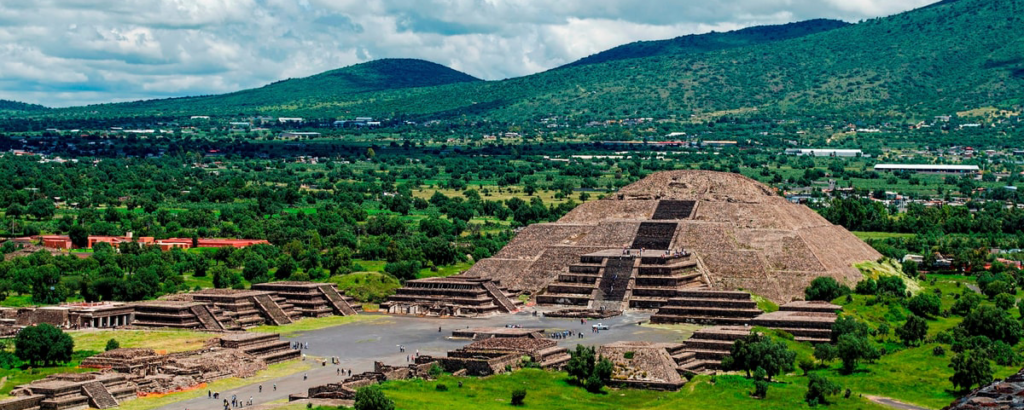Discovering the City of the Gods
Teotihuacan, known as the “City of the Gods,” captivates visitors with its ancient beauty and mysterious history. Located just thirty miles northeast of Mexico City, this archaeological gem once thrived as one of the largest urban centers in the ancient world. Today, it stands as a remarkable reminder of Mesoamerican culture, showcasing advanced architecture, art, and religious beliefs.
A Glimpse into Teotihuacan’s Rich History
Teotihuacan flourished between the first and seventh centuries CE. During this time, the city became a hub of trade and culture, supporting a population of over one hundred thousand people. Its influence spread throughout Mesoamerica, with evidence of trade routes reaching as far as present-day Guatemala and Honduras. The city’s significance goes beyond its size; it held a spiritual and political power that resonates even today.
The name “Teotihuacan,” meaning “the place where gods were created,” reflects its pivotal role in shaping the religious practices of the region. Its construction and layout speak to the careful planning and foresight of its builders, who created a city not just for living, but for worshipping and celebrating celestial forces.
Architectural Wonders of Teotihuacan
One of the most captivating aspects of Teotihuacan is its extraordinary architecture. The Pyramid of the Sun, which rises seventy-three meters above the ground, dominates the skyline. It’s one of the largest pyramids in the world, a symbol of Teotihuacan’s power and religious importance. Nearby, the Pyramid of the Moon, slightly smaller but equally stunning, offers breathtaking views of the entire city. Visitors can climb both pyramids to gain a sense of the city’s grand scale.
The Avenue of the Dead, a vast road stretching through the heart of the city, connects these monumental pyramids. The avenue is lined with platforms and smaller pyramids, all carefully constructed to mirror the city’s celestial and earthly connections.

Religion and Culture at the Heart of Teotihuacan
Religion played a central role in the daily lives of Teotihuacan’s inhabitants. Temples, altars, and murals throughout the city reveal a deep connection between the people and the divine. The city’s layout is not just a matter of urban planning; it reflects an understanding of astronomy and the alignment of the stars.
Teotihuacan was a place of rituals and ceremonies dedicated to the gods, particularly the sun and moon. The Pyramid of the Sun, for example, is believed to be aligned with the sun’s movement, marking important solstices and equinoxes. This demonstrates the profound relationship between the Teotihuacanos and the cosmos.
Teotihuacan Today: A Popular Destination for Explorers
Today, Teotihuacan is a UNESCO World Heritage site, attracting visitors from around the world. Tourists can explore the ancient pyramids, visit the on-site museum, and enjoy a range of activities that highlight the site’s rich history. Early morning visits are recommended, as they allow visitors to experience the site before the crowds arrive, offering a more peaceful and immersive experience.
In addition, guided tours provide in-depth knowledge about the city’s significance. These tours help bring the history of Teotihuacan to life, explaining the symbolism behind its architecture, artwork, and religious practices.
Ongoing Discoveries and New Insights
Archaeologists continue to make significant discoveries at Teotihuacan. For instance, in recent years, a green serpentine mask was uncovered at the Pyramid of the Sun. Such findings offer valuable insights into the spiritual beliefs of the ancient Teotihuacanos. As research and excavations continue, we can expect to learn even more about this ancient civilization.
The Enduring Legacy of Teotihuacan
Teotihuacan remains a monumental testament to the skill and vision of its builders. Its grandeur, both in architecture and cultural significance, continues to captivate people from around the world. Visiting Teotihuacan allows you to walk in the footsteps of ancient people, offering a unique opportunity to witness the remarkable achievements of a civilization that shaped the history of Mesoamerica.
